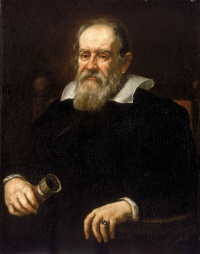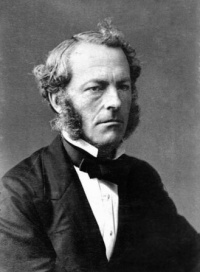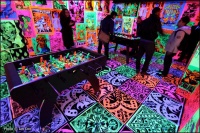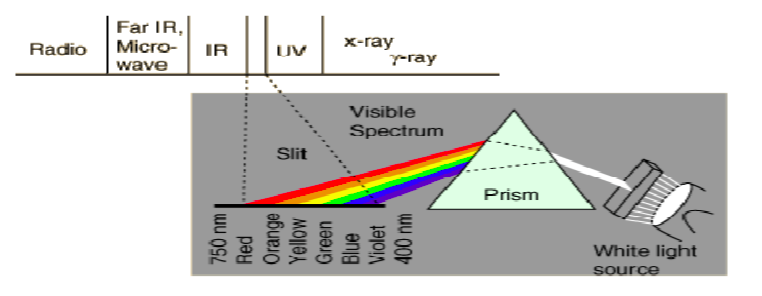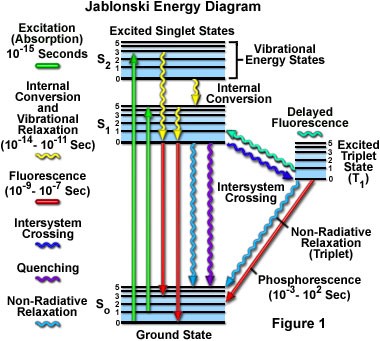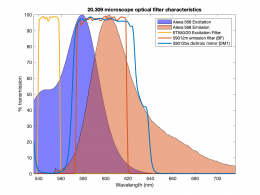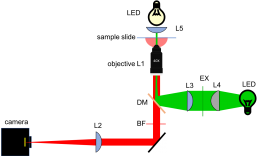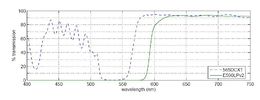Assignment 2: fluorescence microscopy
|
|
|
|---|
Overview
The phenomenon of fluorescence has been beguiling both sober and inebriated witnesses since at least the sixteenth century. Some of the earliest observers noticed an unusual blue tint in water infused with the wood of a Mexican tree called Coatli. Other naturally-occurring fluorescent and phosphorescent materials such as Bologna Stone (baryte) and quinine sparked considerable interest from the most preeminent scientific thinkers: Galileo Galilei, Robert Boyle, David Brewster, John Herschel, and many others.
The brilliant physicist and mathemetician George Stokes conducted a particularly clever experiment in which he used a prism to separate sunlight into its component colors. Stokes noted that a vial of quinine sulfate fluoresced only when it was placed in the ultraviolet part of the rainbow. It was not excited by the other colors. Stokes concluded that fluorescent emission has a longer wavelength than the excitation. In his honor, the difference in wavelength between the peaks of a fluorescent excitation and emission spectrum is now called the Stokes shift.
It would have been unimaginably hard for Stokes and his predecessors to and many others, Aleksander Jablonski finally explained fluorescence in 1935 as a series electronic state transitions, as depicted in the Jablonski diagram. Some naturally fluorescent molecules like fluorescein and quinine have important biological applications on their own. But a key breakthrough in the early 1940s dramatically increased the utility and importance of fluorescence in biology. The key idea was to attach a fluorescent molecule to an antibody. The combination of the two offers spectacular contrast and specificity in microscopic studies of biological samples. Today, fluorescent immunostaining is one of the most important and frequently used techniques in all of biological research.
In this part of the lab, you will add the hardware necessary to make epi-illuminated fluorescent images with your microscope and make a few test images of plastic, fluorescent beads. A typical spectrum is shown on the right. The excitation light source is a 5 mW diode laser with a nominal wavelength of 532 nm — a striking, brilliant green. Emission is in the red/orange range. To make the correction for nonuniform illumination, you will also make images of a uniform fluorescence reference slide and a dark image with the illuminator turned off.
As shown in the block diagram, the major components required for fluorescence imaging are an illuminator (laser, L3, L4, and L5), dichroic mirror (DM), and emission filter (BF). The illuminator provides light in the appropriate wavelength range to excite the fluorescent molecules in the sample. Fluorescence microscopes that use broadand light sources such as arc lamps require an additional filter called an excitation filter to limit the wavelengths in the illumination to the proper range. Because lasers emit light in a very narrow range of wavelengths, an excitation filter is unnecessary.
Excitation light comes from beneath the sample, through the objective lens. A dichroic mirror directs the excitation toward the objective and sample. The mirror must reflect wavelengths in the excitation range and pass the longer wavelengths of the emitted fluorescence. In fluorescence imaging, illumination intensity is typically 5 or 6 orders of magnitude greater than emitted fluorescence, so it is crucial to filter out excitation photons as completely as possible. The dichroic mirror passes a substantial amount of green light, on the order of five percent. The barrier filter does a much better job of removing the green light, attenuating the excitation wavelengths by about 5 orders of magnitude. The barrier filter is essential for making crisp, high-contrast images.
To provide collimated illumination in the sample plane, light from the illuminator is focused at the back focal point of the objective.
Assignment details
This assignment has 2 parts:

